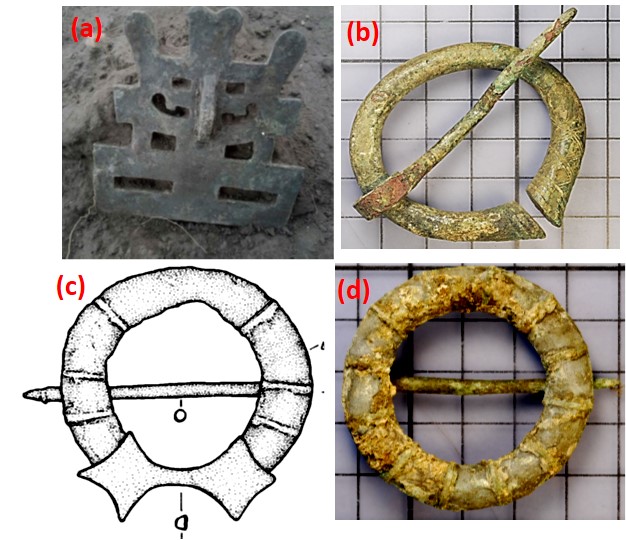TEM investigation on Metallic Nano structure of 11-12th century brass ornaments
- Abstract number
- 843
- Event
- European Microscopy Congress 2020
- DOI
- 10.22443/rms.emc2020.843
- Corresponding Email
- [email protected]
- Session
- PSA.6 - Geological Materials & Bio-mineral systems
- Authors
- Mr. Khurram Saleem (2), Dr. Ulrich Schürmann (2), Prof. Lorenz Kienle (2), Prof. Claus von Carnap-Bornheim (1), Dr. Roman Shiroukhov (1)
- Affiliations
-
1. Centre for Baltic and Scandinavian Archaeology (ZBSA)
2. Institute for Material Science, Christian Alrechts Universitüt zu kiel
- Keywords
Nano-analytic, TEM, Electron Microscopy, Archaeology, Metallic investigation
- Abstract text
Analytical techniques of Materials Science, namely Scanning Electron Microscopy (SEM) and Transmission Electron Microscopy (TEM) were used to study the elemental distribution on the surface and subsurface of ornaments. This interdisciplinary examination of archeological findings can reveal new insights into the production and processing of archaeological items.
A comprehensive analysis of the items would help quantify the information about the technological advancements and trade patterns. The samples belong to the 11-12th centuries brass/bronze (copper alloy) such as fibulas/penannular brooches as shown in fig (1). This work shows by means of scanning and transmission electron microscopy if there is a pattern in elements that are identified on the ornaments. The additional elements are possibly be introduced as decoration or functional purposes during the production. More importantly these ornaments are compared with one another on basis of their chemical and structural compositions in order to get evidence of provenance.
The archaeological items were found within the skeletal graves – inhumations, often in situ at a depth of 0.5-1.0 m. The samples were mechanically cleaned by brush and then sequentially processed in cleaning reagents. The surface of the ornaments was studied by means of Energy Dispersive X-Ray (EDX) Spectroscopy in a SEM (Zeiss Gemini Ultra55 Plus). TEM and High Angle Annular Dark Field (HAADF) and Scanning TEM (STEM) were performed on lamellae prepared from the surface of the ornaments into a depth of ca. 10 µm via Focused Ion Beam (FIB). EDX point measurements and elemental maps were performed in STEM mode. Electron diffraction pattern were recorded to get information about the crystalline structure and phases present. TEM studies were performed in a Jeol JEM-2100 equipped with an EDX detector (Si/Li, EDAX).
FIB lamellae taken out of the regions with the actual representation of the elements inside the ornaments were analyzed with TEM techniques. With expected copper and zinc presence, traces of lead were identified in the analysis of penannular brooch with widened terminals. There was more homogenous distribution of copper with isolated nano-sized lead traces revealed in EDX elemental maps. SEM elemental maps of the surfaces reveal a layer on surface of the ornament consisting of organic compounds in a cloud-like pattern.
The (nano) analytical methods such as advanced X-ray diffraction (XRD), spectroscopic methods and scanning as well as transmission electron microscopy (TEM) are powerful techniques to reach archaeological conclusions.
Figure 1 (a) flat ladder brooch (b) penannular brooch with widened terminals (c) penannular brooch with star-shaped terminals and (d) penannular ring-form brooch from the 11-12th centuries bronze (copper alloy) ornaments
- References
Acknowledgements
The authors want to thank Cristin Szillus for the preparation of the FIB lamellae.

